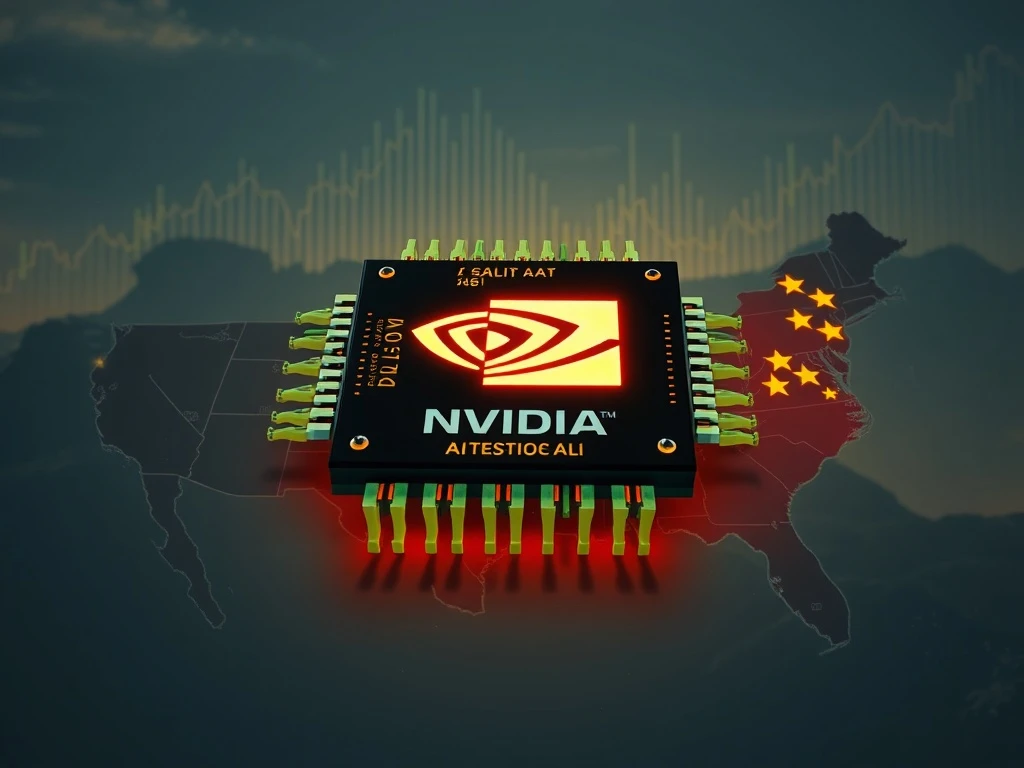Nvidia Revenue Soars: Remarkable 56% Surge Despite China AI Chip Export Controls

The tech world, including the cryptocurrency sector, closely watches Nvidia’s financial health. Nvidia’s performance offers critical insights for tech investors and the broader digital economy. High-performance AI chips power advanced computing. These chips also underpin the infrastructure supporting digital assets. Therefore, understanding Nvidia’s trajectory is essential for anyone tracking technological shifts. The company recently posted remarkable financial results, navigating significant geopolitical challenges. This resilience highlights its pivotal role in the global tech landscape.
Nvidia Revenue Soars Amidst Global Challenges
Nvidia recently announced its financial results for the second quarter of its 2026 fiscal year. The company significantly exceeded Wall Street expectations. Both revenues and earnings per share (EPS) were impressive. Nvidia reported a staggering Q2 revenue of $46.7 billion. This represents a 6% increase from the previous quarter. Furthermore, it marks a substantial 56% rise from the prior year. The announcement came on Wednesday, showcasing robust growth. Net income also reached over $26.4 billion. This strong financial health underscores Nvidia’s market dominance.
The company disclosed its EPS figures. GAAP accounting showed $1.08 per share. Non-GAAP EPS stood at $1.05. Moreover, Nvidia achieved an impressive profit margin. This margin was approximately 72.4% for the quarter. Such high profitability is rare in the semiconductor industry. However, despite these stellar results, Nvidia’s shares experienced a modest dip. The stock sank by about 3.3% in after-hours trading Wednesday. This slight downturn suggests investor caution or profit-taking.
Navigating China Export Controls and H20 Processor Sales
Nvidia addressed specific concerns regarding its business in China. The company’s latest earnings report confirmed zero sales of its H20 processor to China. “There were no H20 sales to China-based customers in the second quarter,” Nvidia stated. The H20 processor is a modified version of Nvidia’s powerful H100 chip. It was specifically designed for the Chinese market. This design aimed to comply with existing US regulations. These rules govern the export of high-performance computer chips. Such chips are crucial for advanced AI applications.
The US-China trade war heavily influences this situation. In January, the Trump administration sought to tighten export controls. These controls specifically targeted Nvidia H20 sales to China. National security concerns drove this decision. Consequently, strict export controls were imposed. These measures included export licenses and substantial fees. The total amounted to about $5.5 billion. This effectively halted H20 chip shipments to China. However, the administration later reversed its stance in August. H20 chip sales to China were allowed to resume. A significant condition was attached: Nvidia must give the US government 15% of the revenue from these sales. This ongoing negotiation highlights the complex geopolitical landscape for tech companies.
Nvidia’s Geostrategic Importance and Tech Stock Performance
Nvidia holds a unique position in the global economy. It is currently the world’s largest publicly traded company. Its market capitalization exceeds $4.4 trillion. The company leads in manufacturing AI chips and computing chips. Its products are indispensable across various industries. Furthermore, Nvidia has gained significant geostrategic importance for the US government. Its technology is vital for national defense and economic competitiveness. This dual role makes its financial health and operational decisions highly impactful.
The company’s continued growth despite export restrictions demonstrates its market strength. Its innovation in AI remains unparalleled. Investors keenly watch its tech stock performance. Any shifts in policy or market demand directly affect its valuation. Nvidia’s ability to adapt to complex regulatory environments is crucial. This adaptability ensures its sustained leadership. The resolution of the H20 sales issue, even with revenue sharing, offers a path forward. This allows Nvidia to tap into the vast Chinese market, albeit under specific conditions. Therefore, its future trajectory will continue to shape the broader tech and AI sectors.
In conclusion, Nvidia’s recent financial results are truly remarkable. The company posted a 56% surge in Nvidia revenue. This occurred despite zero H20 processor sales to China in the quarter. Its robust profitability and market capitalization reflect its dominance. The intricate dance of China export controls on its products remains a key factor. However, Nvidia continues to innovate and expand its global reach. This ongoing saga offers valuable lessons. It shows the intersection of technology, economics, and geopolitics. The company’s resilience sets a precedent for other tech giants navigating similar challenges. Its unwavering focus on AI innovation ensures its continued relevance and impact worldwide.









